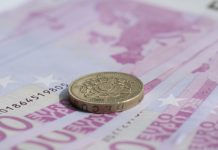After falling across the start of the week, the Euro is attempting to claw back those losses in the second part of the week. The Euro US Dollar exchange rate settled on Thursday +0.36% at US$1.0834.
At 08:15 UTC, EUR/USD is trading +0.05% at US$1.0839 in subdued trading ahead of the highly anticipated non-farm payroll report.
German Exports -11.8%
The Euro is clinging to gains from the previous session ahead of the Eurogroup of finance ministers meeting later today. The meeting comes following Germany’s constitutional court’s ruling which casts doubt over the legality of the European Central Bank’s quantitative easing programme. ECB President Christine Lagarde has been increasing pressure on Eurogroup leaders to do more to cushion the blow from the coronavirus hit to the region’s economy.
Data from Germany is adding pressure to the common currency, pulling it off session highs. German exports slumped -11.8% month on month in March, significantly worse than the -4.8% that analysts had forecast. This was steepest drop since record began in 1990 as the coronavirus crisis reduced demand for goods in Europe’s largest economy.
The German government projects a post WW2 record decline of -6.3% for the export dependant economy despite a rescue package of €750 billion.
21.5 Million US Jobs Lost In April
Demand for the US Dollar is weaker at the start of Friday on improved relations between US and China and ahead of the US jobs report.
US and Chinese negotiators discussed the implementation of the Phase One trade deal on a conference call overnight and agreed that good progress was being made. US – Chinese tensions eased, boosting risk appetite and denting flows into safe havens such as the US Dollar.
Investors will now look ahead t the release of the US labour department’s jobs report, the non-farm payroll. Analysts are expecting the report to show that 21.5 million US jobs were lost in April as the coronavirus lockdown devastated the US economy.
Unemployment is expected to reach 16%, up from 4.4% as companies slashed jobs to control costs. This will be the worst decline in the labour market since 1939. How the US Dollar responds depends largely on whether investors consider these losses to be short term or long term.





